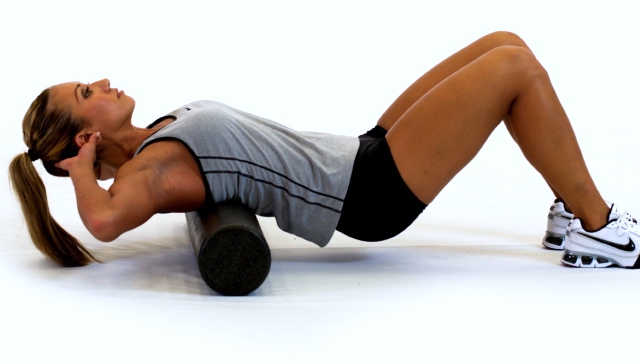There are many reasons to practice yoga although it is essentially a practice intended to make us wiser, calmer, and better able to understand things. If you breathe, you can do yoga. If you are willing to pay attention to your thoughts and feelings, you can do yoga. And if you suffer from chronic pain, yoga can be a powerful compliment to physical therapy, medical treatment or surgery. The key to understanding chronic pain , pain lasting longer than 3 months, is exactly what modern science and yoga teaches: a mind-body connection that doesn’t differentiate physical pain, such as chronic neck pain, and emotional pain, such as depression. Practicing healing breathing and meditations, done anywhere, and at any time, can diminish this kind of suffering.
Calming the Nervous System
Our brain does a fine job of alerting us to incoming threat signals for our safety, but with chronic pain, the body and the nervous system becomes hyper alert, out of proportion with the actual physical pain. Stanford University professor Kelly McGonigal, Ph.D. ,in her book Yoga For Pain Relief, explains how you can thank our nervous system and its ability to learn in response to experience, called neuroplasticity, for that. When you balance on one leg, she writes, the nervous system becomes more sensitive to signs that you are in danger of falling. It also becomes more skilled at using that information to trigger a physical response to keep you in balance. The same holds true for pain, in that the nervous system “gets better†at being in pain, detecting threat and producing the protective pain response. It turns out this also leads to increased sensitivity in areas of the brain that detect any other kinds of conflict. Neuroplasticity can also be a solution, she writes. You have to teach your mind and body something new. The Yoga Sutra , the classic text on yoga , describes conflicts and false perceptions, such as†I am never going to get rid of this painâ€, as Avidya. Avidya literally means “incorrect comprehension.â€It clouds of perception of things.
3 Minute –Meditation
Teach yourself something new by redirecting your mind to your breath, the life force in all of us. Practice this simple meditation to reprogram the biology of any pain you have, and allow your body to heal and thrive. (Adapted from Emotional Freedom by Judith Oroloff M.D.)
•   Find a comfortable quiet place where you won’t be interrupted. Settle into a relaxed position, or prop yourself on your bed, with pillows supporting you, so you won’t fall asleep.
•   Focus on your breath to quiet your thoughts. Eyes closed, gently place your awareness on your breath. Be conscious of only breathing in and out. Notice your thoughts, but don’t attach any judgment to them. Just let them float away & gently return to focusing on your breath. Relax a little more.
•   Breathe in calm, breathe out stress. Let yourself feel the sensuality of inhaling as you first fill your chest and then fill the abdomen, and exhale as you release the abdomen and then finally empty the top of the lungs. This stretches your spine and straightens your back. With each slow, deep breath, feel yourself inhaling calm, sweet as the summer jasmine, then exhale frustration. All negativity is released. Your body unwinds, lulling your biology. You’re cocooned by the safety of stillness. Keep refocusing on your breath and the calm. Only the calm.
There are many ways to describe the meaning of yoga beside the classic definition of one with the divine. No matter what name we use for the divine, anytime we feel in harmony with a higher power, that too, is yoga. One of the most influential yoga teachers of our time, Sri T. Krishnamacharya, spent most of his life helping people with all sorts of illness. For one person, it might have been a more physical practice, for another, prayer and meditation might have been more appropriate. What ever you choose, practice it if only for a few minutes each day, as simple as breathing .
Connie Aronson is an ACSM Health & Fitness Specialist located at the YMCA in Ketchum, Idaho. She is currently at her annual yoga retreat, with big Montana skies.


